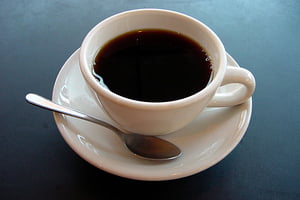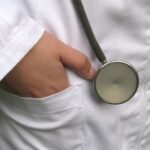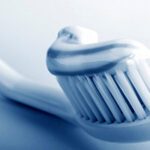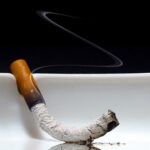Having a tooth extracted is not a pleasant experience for anyone, but just when you think you’re done with the worst of it, your dentist may deliver even worse news: you’re at risk for dry socket. Dry socket is the incredibly painful condition that occurs when the blood clot covering the hole where your tooth once was breaks loose. The result is exposed bone and excruciating pain that even the worst painkillers cannot numb. In an effort to prevent dry socket, your dentist will likely advise you to avoid smoking, caffeine, soda, sugary foods, and an assortment of other things for several days. But as anyone who’s ever had a vice knows, quitting is easier said than done, and if you’re already in pain from a tooth extraction, quitting can be ten times more miserable.
There’s no guarantee of who will or won’t get a dry socket, and people who follow all the rules can get the condition. Similarly, people who break all the rules can avoid it. But by taking a few precautions, you can dramatically lower your likelihood of getting dry socket and can still go about your normal routine. Here’s what to do:
No Sucking or Pressure in the Mouth
The real problem with smoking after a tooth extraction isn’t the smoke itself; it’s the sucking. Even light pressure on your tooth in the days after extraction can lead to a painful extraction site, which is why your dentist tells you not to smoke. If you must smoke, take very light puffs on your cigarette rather than sucking hard on it. When you blow out the smoke, blow gently or blow it through your nose.
No Pressure on the Extraction Site
Carbonated beverages, crunchy foods, and other items place pressure on the extraction site that can dislodge the blood clot. If you simply must drink a soda, smoke, or break another one of your dentist’s rules, try packing the extraction site with gauze beforehand. This adds an extra layer of protection that makes it less likely that the infection site will be disturbed.
Delay as Long as You Can
Your dentist may make you feel that if you don’t wait the full 48 or 72 hours, you’ve failed completely, but your dentist is wrong. The most critical hours after a tooth extraction are the first few. If you can make it even only a few hours after your tooth extraction without smoking or drinking carbonated beverages, you’ll dramatically decrease the likelihood of getting a dry socket. Avoid breaking the rules for as long as you can, even if it’s just an hour or two.
Be Quiet
No dentist is going to tell you not to talk, but talking places just as much pressure on the extraction site as smoking and carbonated beverages do. If you can avoid talking for a few hours, you’ll help lessen the likelihood of a dry socket.
Things Your Dentist Can Do
There are a few steps your dentist can take to help you avoid a dry socket no matter what else you do. Placing a foam substance in the wound can protect the wound from the elements.This foam is generally absorbed into your body in a few days and many dentists have started using it as an added protection against dry socket. Stitches can also help lessen the likelihood that something dislodges the blood clot and causes dry socket. It is also important to note that dentists who treat the extraction site with an antibiotic dressing report a lower incidence of dry sockets in their patients. Finally, some dentists will send you home with clove oil if you ask. This is the best emergency treatment available for dry socket and will ensure you have pain relief if you get a dry socket while your dentist is not available.
While no one should be encouraged to break their dentist’s rules, sometimes life happens and we can’t give up everything we do just because we had a tooth removed. With a little caution and awareness, you should be able to live your life normally without getting a dry socket.
Sources:
http://www.americasdentalbookstore.com/articles/OralSurgery/DrySocketPrevention.htm
http://en.wikipedia.org/wiki/Alveolar_osteitis






